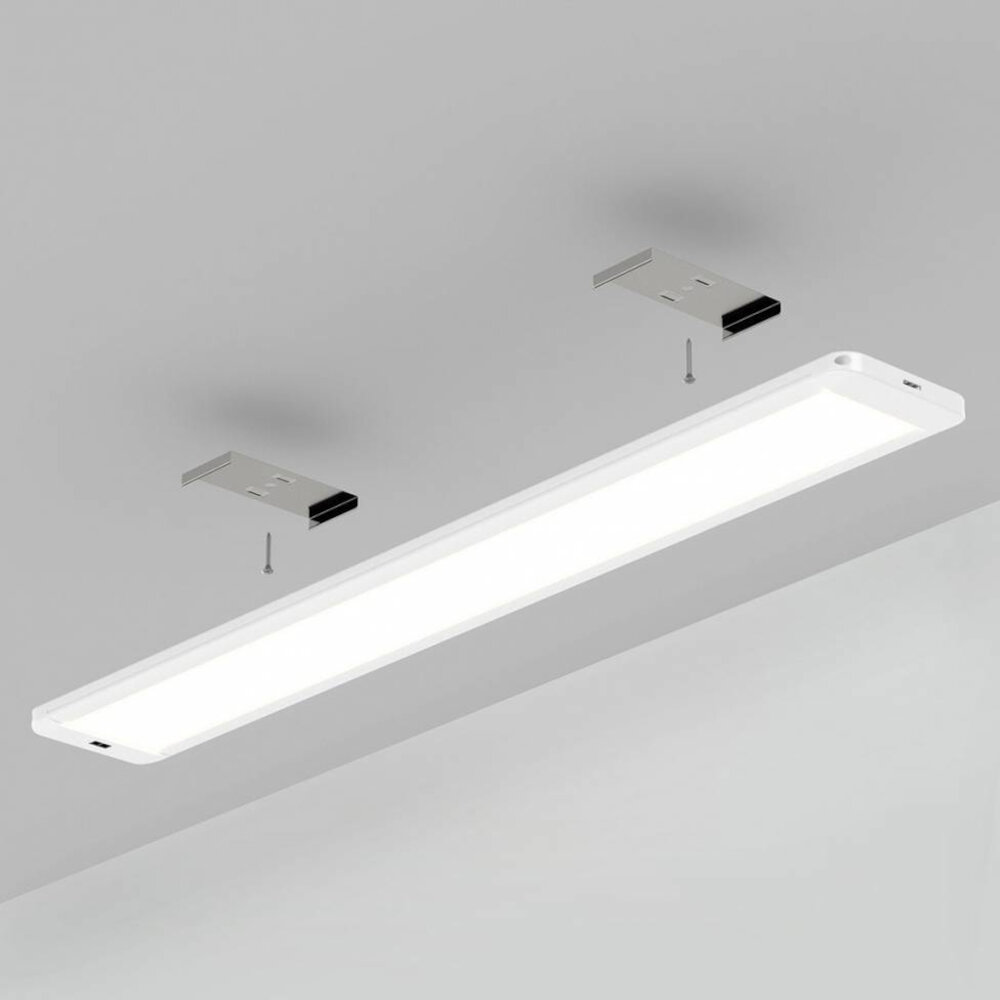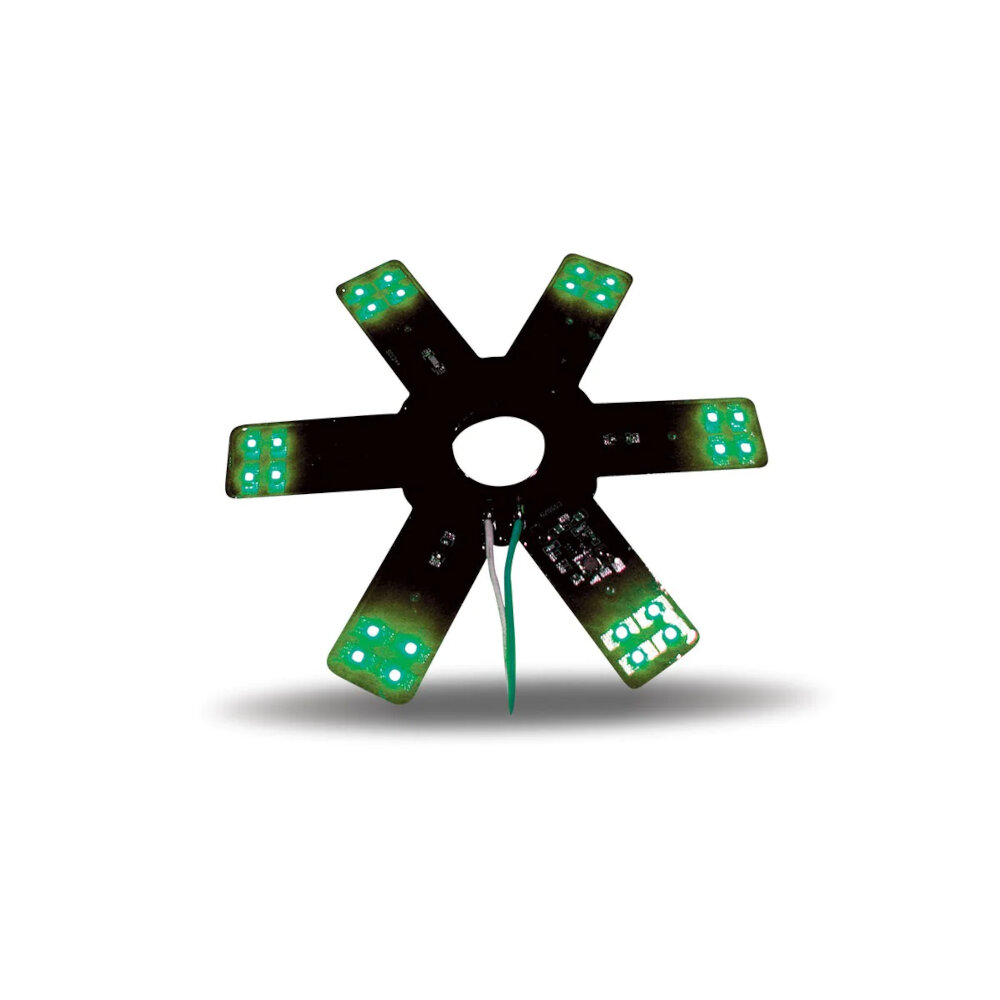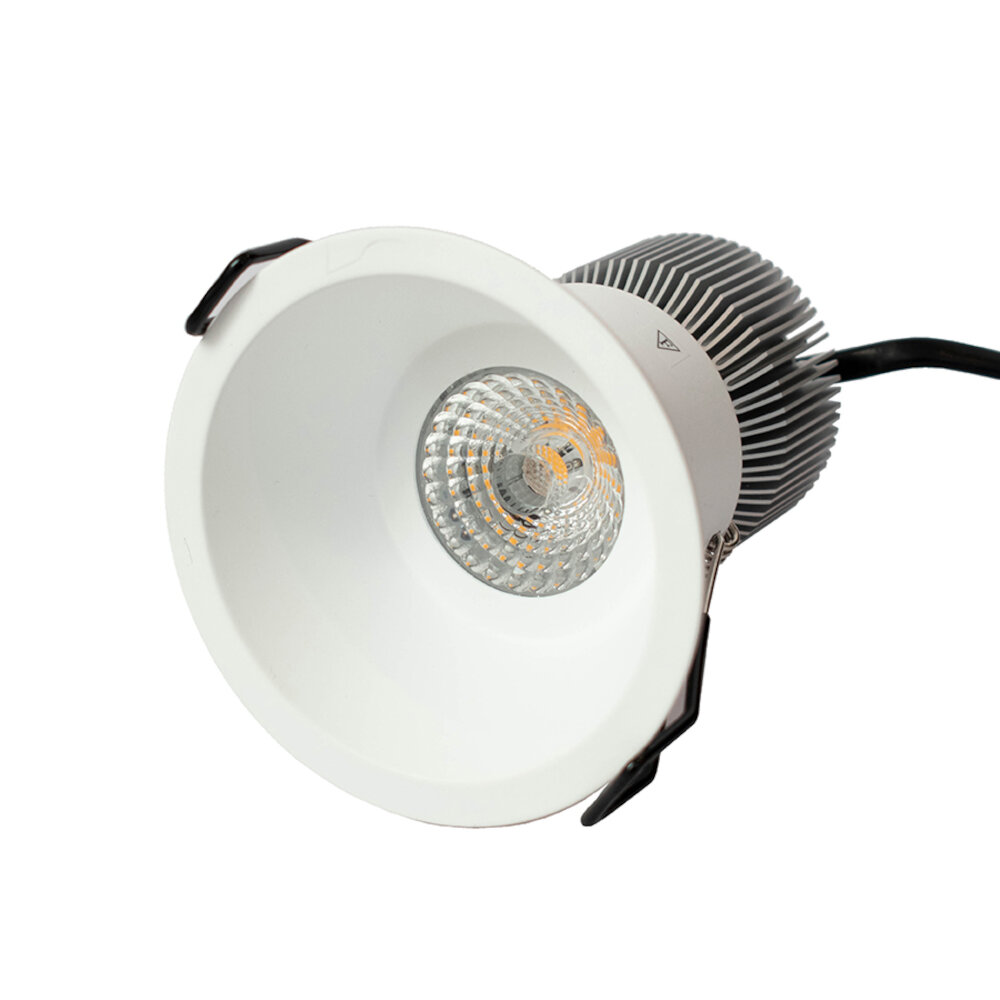Explained: Why Do LED Lights Dim When Off and How to Fix It?

Light emitting diodes (LEDs) have revolutionized the lighting industry with their energy efficiency, longevity, and versatility. However, one common issue that many LED users face is the dimming of their lights when turned off. This phenomenon can be frustrating and confusing, especially for those who are new to using LED lights. In this article, we will explore the reasons behind why LED lights dim when turned off and how to fix this problem. We will break down the science behind LED lights, discuss the factors that contribute to dimming, and provide practical solutions for addressing this issue. Whether you are a homeowner or a business owner, understanding how to fix LED light dimming can help you get the most out of your lighting investment and create a comfortable and well-lit environment.
LED (Light Emitting Diode) lights are popular for their energy-efficient, long-lasting, and eco-friendly properties. They are semiconductor devices that convert electric energy into light energy, and they do so very efficiently, consuming much less power than traditional incandescent or fluorescent bulbs. The LED lights are also highly durable and can last up to 25 times longer than incandescent bulbs, and they do not contain any hazardous materials such as mercury. Furthermore, LED lights can be dimmed, which adds to their appeal as a lighting option for various settings. Their popularity has increased rapidly over recent years, and they are now commonly used in homes, offices, cars, and outdoor settings.
The phenomenon of dimming when off in LED lights can be perplexing for many users. This occurs when the LED bulbs remain partially lit even when the switch is turned off. This is caused by a small amount of electric current that continues to flow through the switch, which is enough to power the LED and result in dim lighting. Although this may not be a significant issue, it can lead to energy wastage and shorten the lifespan of the LED lights. Fortunately, there are various solutions to fix this problem, such as installing a bypass capacitor or using a smart switch that cuts off all electric current when turned off.
Understanding LED Lights

LED lights have become increasingly popular over the years due to their efficiency, durability, and versatility. Unlike traditional incandescent bulbs, LED lights do not rely on heat to emit light, making them more energy-efficient and longer-lasting. LED lights are composed of a semiconductor material that emits light when an electric current is passed through it. This process is known as electroluminescence. The color of the light emitted by an LED is determined by the type of semiconductor material used. LED lights are available in various colors, including red, green, blue, yellow, and white. One common issue that users of LED lights may encounter is dimming when the lights are turned off. This can be caused by a phenomenon called ghost voltage, which occurs when there is a residual voltage in the circuit even when the switch is turned off. Ghost voltage can cause LED lights to glow faintly, even when they are supposed to be off. This can be particularly frustrating for users who are trying to create a completely dark environment, such as in a bedroom or home theater. There are several ways to fix this issue, including using a switch with a higher voltage rating, installing a snubber circuit, or using a power conditioner. By addressing the issue of ghost voltage, users can ensure that their LED lights are functioning correctly and providing the desired level of illumination.
LED lights, or light-emitting diodes, are a type of solid-state lighting that has revolutionized the lighting industry. Unlike traditional incandescent bulbs that use a filament to produce light, LED lights use a semiconductor to convert electrical energy into light. When an electric current is passed through the semiconductor, electrons are excited and jump from one energy level to another, releasing energy in the form of light. This process is known as electroluminescence. LED lights are highly efficient and long-lasting, consuming up to 80% less energy than traditional bulbs and lasting up to 25 times longer. However, some users may notice that their LED lights appear dim or flicker when turned off, which can be caused by a phenomenon known as residual current.
LED lights are becoming increasingly popular due to their numerous advantages. One of the most significant advantages of using LED lights is their energy efficiency. They consume less energy than traditional incandescent bulbs and can last up to 25 times longer. This results in significantly lower electricity bills and reduces the carbon footprint. LED lights are also highly durable and can withstand harsh weather conditions, making them ideal for outdoor use. They emit less heat, making them safer to use and reducing the risk of fire hazards. Additionally, LED lights are available in a variety of colors and can be dimmed to suit different moods and occasions. Overall, using LED lights is a smart choice that offers a range of benefits.
When compared to traditional lighting options, LED lights offer significant advantages. Firstly, LED lights are energy-efficient, using up to 80% less energy than traditional incandescent bulbs. This translates into lower electricity bills and reduced carbon emissions. Secondly, LED lights have a longer lifespan, lasting up to 25 times longer than traditional bulbs. This means less frequent replacements and lower maintenance costs. Additionally, LED lights are more durable and resistant to shock and vibration, making them ideal for outdoor and industrial applications. Finally, LED lights are available in a wide range of colors and can be dimmed to create different moods and atmospheres. Overall, the benefits of LED lighting make it a superior choice to traditional lighting options.
Why Do LED Lights Dim When Off?

LED lights are known for their energy efficiency and long lifespan, making them a popular choice for residential and commercial lighting. However, one issue that some people may encounter is that their LED lights appear to dim when turned off. This phenomenon is known as \ghosting\ or \leakage\ and can be caused by a variety of factors. One of the main reasons why LED lights may dim when turned off is due to residual electricity in the circuit. This residual electricity can be caused by a variety of factors, including capacitive coupling between wires or residual voltage in the LED driver. Over time, this residual electricity can build up and cause the LED lights to appear dimmer when turned off. To fix this issue, it is recommended to install a bypass capacitor or a snubber circuit to help dissipate the residual electricity and prevent ghosting. Additionally, upgrading to a higher-quality LED driver can also help reduce the amount of residual voltage in the circuit and prevent dimming when the lights are turned off.
The phenomenon of dimming when off in LED lights is caused by a small amount of electrical current that continues to flow through the light even when the switch is turned off. This residual current is often referred to as a \phantom load\ or \vampire power\ and is a common issue with many electronic devices. LED lights are particularly susceptible to this problem because they require very little power to operate and any residual current can cause them to glow dimly. This is not only a nuisance but can also lead to increased energy consumption and higher electricity bills. Fortunately, there are a few simple solutions to this problem, such as using a switch with a built-in timer or installing a special switch that completely cuts off power to the light.
LED lights are known for their energy efficiency and long lifespan, but they can also present a common issue of dimming when turned off. This happens because LED lights have a small amount of voltage running through them even when switched off, due to the electronic components that regulate the flow of electricity. This small amount of residual voltage can cause the LED lights to appear dim when off. Furthermore, LED lights have a unique construction that allows them to be more sensitive to electric currents, which can also contribute to the dimming effect. However, this issue can be fixed by adding a bypass capacitor or installing a switch that completely cuts off the power supply to the LED lights when switched off.
There are several factors that can affect the dimming effect of LED lights when they are turned off. One of the most common factors is the presence of residual current in the electrical circuit. This current can cause the LED lights to continue to glow, albeit dimly, even when they are supposed to be off. Another factor that can contribute to this dimming effect is the presence of electromagnetic interference (EMI) in the circuit. This interference can cause the LED lights to flicker or dim when they are turned off. Additionally, the quality of the LED lights themselves can also play a role in their dimming behavior. Low-quality LED lights may be more prone to dimming or flickering when they are turned off, whereas high-quality LED lights are less likely to exhibit these behaviors.
Dimming LED lights may come with certain risks and concerns that need to be taken into account. One of the primary concerns is flickering, which can cause eye strain and headaches in some people. Another potential risk is reduced lifespan, as dimming can cause LED lights to overheat and wear out more quickly. Additionally, dimming can cause compatibility issues with certain dimmer switches, leading to inconsistent performance or even damage to the fixtures. Therefore, it is essential to choose compatible dimmer switches and LED lights and to ensure that they are installed correctly to avoid any potential risks or concerns.
How to Fix Dimming LED Lights?

LED lights are an energy-efficient and long-lasting lighting solution that has become increasingly popular in homes and businesses worldwide. However, one of the most common issues that people face with LED lights is dimming. It can occur when the lights are turned off, or when they are turned on, and it can be frustrating to deal with. Dimming LED lights when off can be caused by various factors, including the electrical setup, faulty wiring, or the quality of the LED lights themselves. Fortunately, there are several ways to fix dimming LED lights, and it is essential to address the issue promptly to avoid any potential safety risks. One of the most effective ways to fix dimming LED lights is to ensure that the electrical setup is appropriate for the lights. In some cases, the wiring in your home or business may not be compatible with LED lights, which can cause them to flicker or dim. If this is the case, it is essential to have a qualified electrician inspect your wiring and make any necessary upgrades. Additionally, using high-quality LED lights can help prevent dimming, as they are less likely to flicker or dim when connected to a stable electrical supply. By taking these steps, you can fix dimming LED lights and enjoy the many benefits that LED lighting has to offer, including energy efficiency, longer lifespan, and better lighting quality.
There are several possible solutions to fix dimming LED lights, depending on the root cause of the problem. One solution is to use a higher-quality LED driver that can handle the voltage fluctuations and provide a more stable current to the LEDs. Another option is to install a voltage regulator or surge protector to prevent power surges or drops from affecting the LEDs. Additionally, checking the wiring and connections to ensure they are secure and properly grounded can also help eliminate dimming issues. Finally, replacing older or damaged LEDs with newer, more efficient models can improve overall performance and prevent dimming. By taking these steps, homeowners can enjoy the full benefits of LED lighting without any unwanted flickering or dimming.
Identifying the root cause of any problem is crucial in finding a lasting solution. This holds true for LED lights dimming when they are turned off. Without identifying the underlying cause, one may apply a temporary fix that may not address the root of the issue. Moreover, failing to address the root cause can lead to more problems down the line. It is therefore imperative to investigate the cause of LED lights dimming when off, which may range from electrical faults to faulty wiring. By identifying the root cause, one can take appropriate measures to fix the issue and prevent it from recurring in the future.
When installing LED lights, there are several steps that need to be followed to ensure proper installation and wiring. Firstly, it is important to identify the correct voltage and current requirements for the LED lights. This information can usually be found on the packaging or in the product manual. Secondly, the wiring should be done in accordance with the manufacturer’s instructions to avoid any potential hazards. This includes proper grounding, insulation, and protection against potential damage from moisture or heat. Additionally, it is important to use high-quality components such as connectors and cables to ensure a reliable installation. Finally, it is recommended to test the installation after completion to ensure that the LED lights are functioning correctly and that there are no issues with flickering or dimming. By following these steps, the installation and wiring of LED lights can be done safely and effectively.
To avoid future dimming issues with LED lights, there are a few tips you can follow. Firstly, ensure that you are using high-quality LED bulbs that are compatible with the dimmer switch you have installed. Secondly, make sure that the dimmer switch is compatible with the electrical load of the LED bulbs, as this can cause flickering or dimming issues. Thirdly, consider installing an LED driver, which can regulate the voltage and current to the LED bulbs, preventing any dimming issues. Finally, ensure that your wiring is up to code and that all connections are secure and properly grounded, as this can also cause dimming or flickering problems. By following these tips, you can enjoy your LED lights without any dimming or flickering issues in the future.
In the article \Explained Why Do LED Lights Dim When Off and How to Fix It,\ the main points discussed are the reasons why LED lights may continue to emit dim light even when turned off. This phenomenon is due to the electronic components of the LED light, which can retain a small amount of electrical charge even after the light is switched off. The article further explains how this issue can be resolved, including replacing the light switch with one designed for LED lights, installing a resistor or capacitor, or using a smart lighting system. Additionally, the article emphasizes the importance of addressing this issue to prevent wasted energy and reduce electricity bills.
It is crucial to take proper measures to fix dimming LED lights as it can cause inconvenience and affect the overall lighting quality of a space. Dimming LED lights when off can be caused by various factors such as voltage drop, power supply issues, or faulty wiring. Failure to address these issues can lead to a decrease in the lifespan of the LED lights and can potentially pose a safety hazard. Therefore, it is important to troubleshoot and fix any issues with dimming LED lights promptly. This may involve consulting a professional electrician, replacing faulty components, or upgrading the power supply to ensure consistent and reliable lighting performance. By taking proper measures to fix dimming LED lights, one can ensure optimal lighting quality and maintain a safe and comfortable environment.
In conclusion, the use of LED lights has numerous benefits, such as energy efficiency, long lifespan, durability, and low maintenance. However, LED lights can also have some issues, including dimming when turned off, which can be attributed to residual current. Fortunately, this problem can be easily fixed by using a bypass capacitor or a snubber circuit. It is essential to understand the underlying causes of the issue to address it effectively. Overall, the benefits of LED lights outweigh the drawbacks, and with proper maintenance and troubleshooting, their performance can be optimized, making them an excellent choice for lighting in various settings.
When it comes to LED lights, many people have experienced a common issue of dimming or flickering when turned off. This phenomenon is known as \ghosting\ and occurs due to residual voltage that is left in the wiring even when the switch is turned off. Ghosting can be frustrating as it not only affects the aesthetics but also wastes energy. However, there are several ways to fix this issue such as installing a bypass capacitor, adding a snubber circuit, or using a switch with a higher voltage rating. By addressing the root cause of ghosting, you can enjoy the full benefits of LED lighting without any annoying side effects.
Conclusion

In conclusion, the dimming of LED lights when turned off is a common issue that can be caused by a variety of factors, including residual heat and the presence of a dimmer switch. However, with the right approach, it is possible to fix this problem and enjoy the benefits of LED lighting without any unwanted side effects. From adjusting the wiring to installing a bypass device, there are many solutions available that can help you keep your LED lights shining bright and clear, even when they’re turned off. So if you’re struggling with dimming LED lights, don’t despair – with a little bit of knowledge and effort, you can easily overcome this challenge and enjoy the full potential of this innovative and energy-efficient lighting technology.




